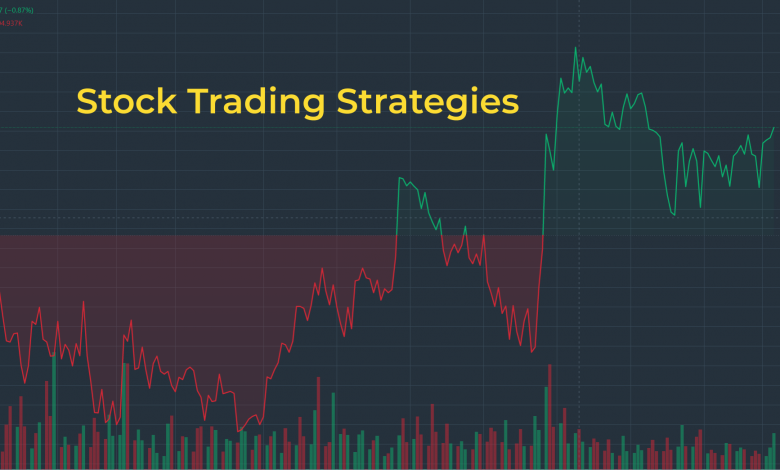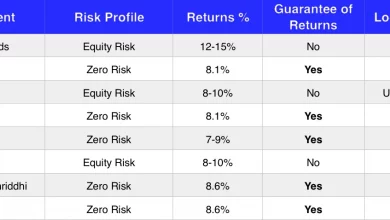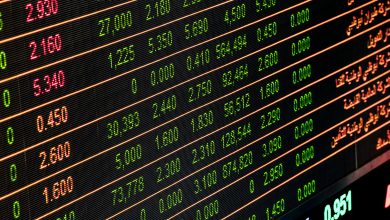Stock Trading: How to Begin, How to Survive

Stock trading is a widely known term that can be heard from both professional traders and beginners that had just opened their first broker account. But buying or investing in stocks differs from actual stock trading.
Since the late stage of the XXth century, trader’s image was progressively formed in mass media: a rich guy in a good suit riding in his car and always being on the phone giving orders on what to buy or sell. A little bit later, that image transformed into something that we’ve seen in “The Wolf of Wall Street” movie and after that, it was only been modernized just a bit. But all of these images were not even close to an average stock day trader.
Stock trading is not what you see in the movies. Stock trading is just another job that is similar to others. Professional traders have the same working days as others, the same routine, and the same responsibilities. If you think that it’s easier than working on a daily job, you are wrong. Even though some traders have no workday in traditional understanding they still follow trends and pre-and post-market hours. Those are always set and working.
To better understand how active stock trading works, we should first define what stock trading is.
Contents
What are stocks and stock trading?
Stocks which are also known as equities or shares are securities that allow you to receive ownership of the company. The stock allows you to “buy” the company’s share in proportion to the number of securities that you’ve purchased. Sometimes, you also receive a share of the company’s profits.
You can buy stocks on stock exchanges, private sales, and funds. If you are not trading directly on the exchange, you can purchase stocks through your online stockbroker or a personal broker.
Public companies sell their stocks to raise additional funds for any type of operations that they are currently going through. Shareholders that bought some part of the chosen corporation now have the right to manage the company’s assets and earnings. But it obviously depends on the number of shares that you own. To simplify: once you buy a stock you become one of the owners in the company that issued those securities.
But not all the shareholders are equal. For example, the decision-making process in the company will be available only for the largest shareholders. Sometimes, the majority of the stocks can be focused in the hands of one individual. Ownership of the company directly depends on the number of shares. Once someone holds 50% + 1 share of all issued stocks, he or she automatically becomes a majority holder and is now able to manage the company.
What types of stocks trading are there?
There are multiple ways and styles of active trading that you can implement to stocks speculation. We will describe the most popular ones:
Scalping
Scalping is a quite popular way of trading that’s being recommended for newbies by various articles and brokers. But don’t fall for that! Scalping is a high-risk style of trading and usually isn’t done manually. Only professional traders are able to use scalping trading strategies with the help of automated trading robots and algorithms.
You might ask why so many brokers and trading websites are recommending scalping as one of the best styles of trading? it’s quite simple: brokers receive the largest profit from scalpers since they open the highest amount of positions on the market and pay the biggest amounts of fees to the brokers. That’s why it’s more profitable for brokers to serve 100 scalper traders rather than 1 long-term trader.
Intraday trading
One of the most popular ways to trade among beginners and investors. Intraday trading means buying and selling stocks inside of one trading day. When you trade intraday, you most likely would follow the most volatile and high-volume stocks. Popular options are Apple, Amazon, and Tesla. Intraday traders most commonly use technical analysis to find the best entries and exits on the intraday charts like 30 minutes, 1 hour, and 4 hours.
But professional traders and investors do not recommend starting intraday trading right away since chances to fail are quite high on the active intraday market due to the high amount of chaotic movements that you can’t predict. In addition to high risks, you will spend a lot of money on the trading fees while opening and closing multiple positions in one day. Best intraday trading strategies include multiple ways of analysis that you have to implement to make the most profit. But we will talk about the strategies a bit later.
Middle-term trading
Mid-term trading is the safer option of intraday trading or scalping. Mid-term traders are probably one of the most popular types of traders on the market. The average investment timeframe for those types of traders stays around 1 to 3 months. Usually, mid-term traders use both financial and technical analysis to find the best positions on the market. They use technical analysis to find the best points of entry on the positions that they’ve picked according to their financial or technical strategy.
Long-term trading
Long-term trading strategies are aimed at the long-term holding of the financial assets in order to receive a constant return in the form of dividends – payments that companies make to the shareholders which are basically profit sharing. Even when the stocks that they’ve bought start to plunge down, they average their position by buying stocks cheaper than their initial entry. Long-term traders are usually trading only on stocks or some index that are moving in the uptrend without using short-term trading or selling the loaned stocks to gain profit.
Long-term trading strategies don’t require you to constantly watch the index or stock that you’ve invested in. Instead, you spend most of your time on the research and analysis of the companies that you are willing to buy stocks from or an index that contains all stocks that you are looking for. Investors are not usually following technical analysis and just sometimes looking at the current trend on the position. In addition to that, they are not following some minor market movements and not selling their assets if the market keeps falling down for some reason and period of time.
Using the long-term trading strategy might be a justified decision if you are not willing to spend a lot of time on constant market monitoring and are willing to simply hold stocks of the one or two companies that you think will grow in value.
How to start trading stocks?
- Choose the broker and open a brokerage account
For most clients, using a brokerage account is necessary due to the inability to directly trade on the exchange, but don’t worry: 99% of the market participants are using brokers. A brokerage account is similar to a bank account that is used for holding funds. Choose the broker that you like by looking at fees, their trading platform, and mobile apps.
After you choose the trading platform and brokerage, you will be able to open an account and start trading stocks.
- Decide on how much money you are willing to spend on the trading stocks
It’s really important to set the trading budget that you are willing to spend on stocks. Don’t buy stocks or any other financial assets using the funds that you live on. Some individuals set aside 10% of their overall profit and invest it in stocks or any other assets.
Some traders are advising you to only spend money that you are ready to lose on trading or investing. Such an attitude will help you to succeed in stock trading without having too much pressure on yourself.
- Learn the basics
Before starting active trading, you will have to learn the basic tools of the trading platform like limit and market orders, stop-loss, and stop-buys. There are many tools that you will need to learn to start using trading platforms. The most important tools are located in the order windows:
- Limit and market orders – is the main tool for any trader. Without knowing how orders work you won’t be able to trade with any strategy.
- Limit order – is an instruction of the client that orders broker to open sell or buy order once price hits a specified value.
- Market order – instruction of the client that orders broker to immediately execute sell or buy order at the best price available on the market.
- Stop-loss order – instruction of the client that orders broker to sell his assets once price hits a specified value.
Those are four main tools that you should use while you trading on the active stock market.
What stocks to buy?
In order to find the best stocks or indexes for trading that might give you a good amount of profit, you have to establish a trading strategy that will help you find good positions on the market. To build a sufficient strategy, you’ll have to specify the way you are going to analyze the market. There are two most popular methods of analyzing the stock market:
- Technical analysis – a set of tools and indicators that are being used to predict market movements on the basis of previous market history.
- Fundamental analysis – method of market analysis based on the performance of the company, country, or any other institution.
In order to learn intraday trading, you will have no other choice but to start studying both methods of market analysis. Technical analysis is an irreplaceable tool for short-term market analysis which includes looking for the best entries and exits from positions.
Technical analysts utilize tools called indicators for intraday trading that usually work based on the data from previous price movements. For example, moving average lines or relative strength index are being widely used to see the direction of the trend, support, and resistance levels on the price chart. All indicators are being used with a wide array of settings and add-ons.
The fundamental analysis serves more as a tool of advanced long-term analysis. It’s being used by fund managers and financial companies that are managing their funds by redistributing them on the market. Fundamental analysis allows traders and investors to see the potential of a company on the market. Most of them invest in the company’s stocks while they are cheap and reap profits later.
The best intraday trading stocks are usually ones that have the largest volumes and highest volatility (a range that price moves in). Most popular positions on the market like TSLA, AAPL, AMZN, and similar ones will do if you want to start trading stocks in the short term.
Conclusion
Trading stocks is not the easiest thing to do. Hopefully, our article has helped you understand that in order to become a successful trader or investor, you will have to spend a lot of time researching and analyzing markets. In addition to that, you won’t succeed with the basic knowledge of economics and the market. Don’t waste your time losing money on the financial market, start learning and researching now and become 10% of the people that make money on the stock market.




